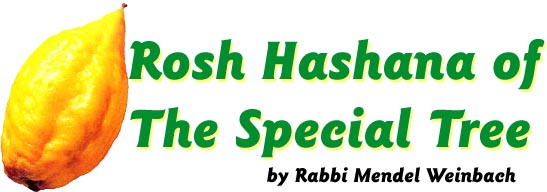Rosh Hashanah of The Special Tree

Four varieties of Rosh Hashana are listed in the opening mishna of this mesechta. One, the Rosh Hashana related to the tree, is on the 15th of Shevat according to the opinion of Beit Hillel; it is familiar to us as "Tu (15th) B’Shevat — the New Year of the trees." There are several halachic implications of this date, such as determining the year’s beginning in regard to tithes. Fruits reaching a certain state of development before Tu B’Shevat are not tithed with fruits that reach that stage later. Similarly, this date determines the type of tithe that applies: Ma’aser sheni, the "second tithe" applies to fruits of the second year in the seven-year agricultural cycle; whereas, ma’aser ani, the tithe for the poor, applies to fruits of the third year. There is also the ramification of how to determine when the fruits of a tree have passed the three year stage during which they are forbidden as orlah. (Whether Tu B’Shevat determines the beginning of the shemita year for fruits is the subject of a lively debate of halachic authorities cited by Rabbi Shlomo Strashun (Rashash) in the back of the gemara.)
One of the great Chassidic leaders, Rabbi Zvi Elimelech of Dinov, in his classic work "Bnei Yissachar" makes an interesting observation: All the items mentioned in the mishna affected by the various Rosh Hashana dates — kings, documents, festivals, animals and vegetables — appear in the plural form. The only exception is the tree which is referred to in the singular.
This, he suggests, may be a hint that on Tu B’Shevat, the New Year of the trees, we focus on one particular tree, the one which provides the etrog for the mitzvah of taking the four species on Succot. There is a tradition, he notes, to pray on that day to have the privilege of acquiring not only a kosher etrog, but a beautiful one as well. It is on that day that the sap rises in fruit trees, and the etrog each Jew will acquire depends on his individual merit. Prayer on this day, concludes the author, will "bear fruit," and it is to this prayer which the mishna alludes in switching to the singular form in regard to trees.






